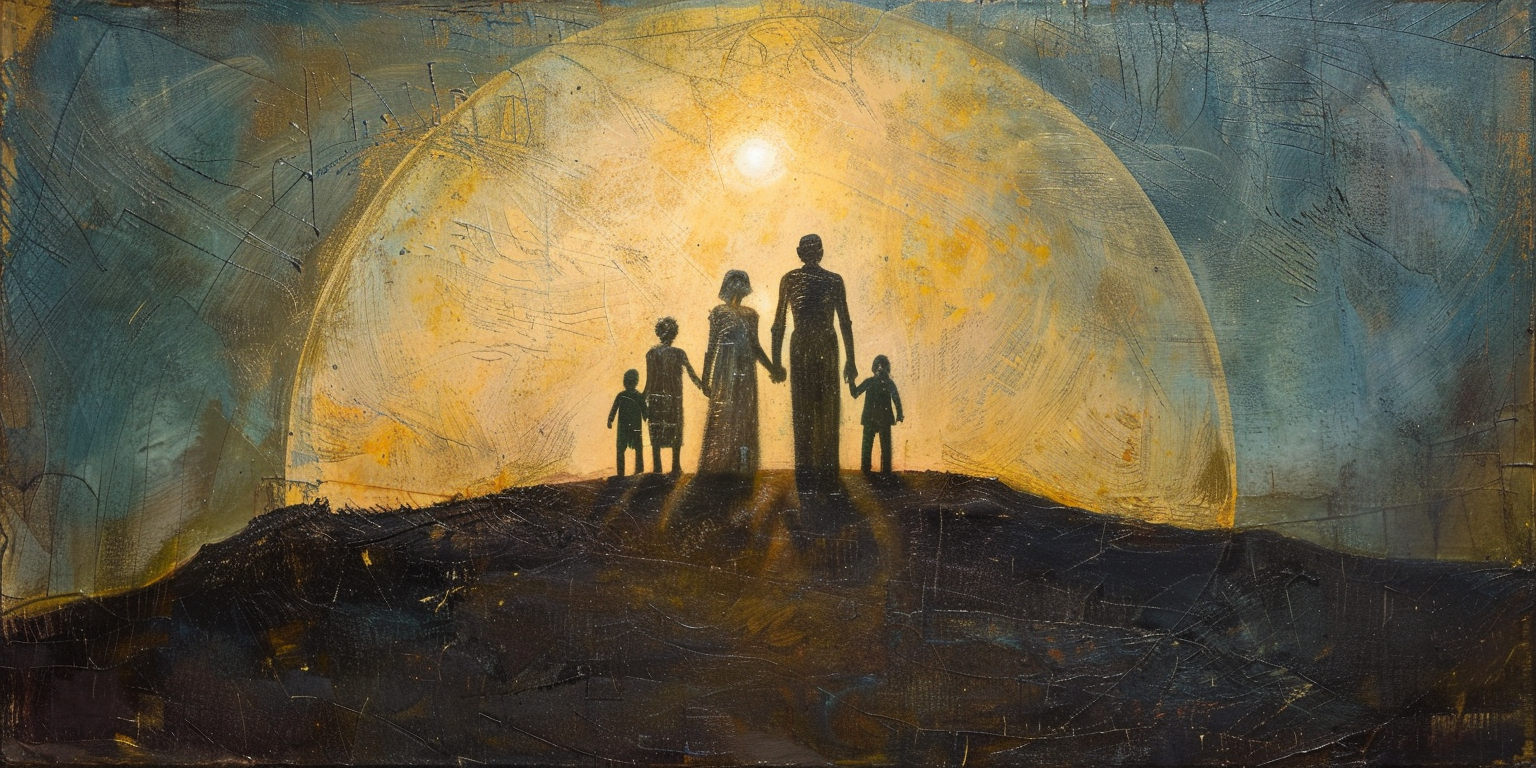A week ago, we published an in-depth interview with Kera Birkeland—the state representative behind Utah’s legislation on women’s sports and transgender-identifying youth, followed up by a look at the broader conversation around the bill in question this morning. Despite the wide range of issues Cassandra Hedelius had explored with Representative Birkeland, and from a sincere interest in understanding the full truth about what had transpired, we’re not naïve to the way in which this interview gets taken up into the larger discussion as welcoming (or threatening) evidence depending on one’s intuitions on the matter. Like everything else, in other words, these articles are likely to be shoe-horned into the partisan meat-grinder, which churns out day after day the same divisive sausage wearing a hole in all of our hearts.
Adding more fodder to the partisan fire has never been our intent. Public Square Magazine was launched three years ago, this fall, with an inaugural essay entitled, “Interrupting the Rhythm of Negativity” which acknowledged the serious challenges facing our public discourse, but affirmed, “We believe in the public square. And we believe it’s worth preserving,” adding, “rather than sit back aghast as the storm clouds of cultural hostility collide, we feel an urgency to build more robust civic shelters.”
Over these many months of political tension, pandemic struggle, and now international war, our larger message has been consistent: thoughtful, good-hearted people can not only see the world differently, but they can also learn to live in peace together.
But how? Not simply by avoiding offense and not saying anything that will “ruffle feathers.” That’s one of the misconceptions of civility—that if only we were more willing to be polite and even more delicate in our ever-more-cushioned wording choices, maybe then we’d foster communities where everyone feels like they belong.
We don’t believe that. While certainly, sensitivity in our language plays a part in building a society of peace, in all the recorded instances of a successful “Zion society,” there was quite a bit more involved—namely, conversion to a Prince of Peace whose words effectively persuaded hearts and minds across all divisions to “beat their swords into plowshares, and their spears into pruninghooks.”
Imagine what it could mean for our bleeding, terrified world today if entire nations could be persuaded to “not lift up sword against nation” or “learn war any more”? God really has what we need. And He really can free us from all this!
That’s what we believe. And that’s where our hope is centered, as reflected in this most recent conference weekend of the Church of Jesus Christ. God really has what we need. And He really can free us from all this! As the Book of Mormon record attests, “there was no contention in the land, because of the love of God which did dwell in the hearts of the people.”
That’s precisely why our efforts to “lift the contemporary discourse” have centered around “amplify[ing] thoughtful voices of faith”—whom author C.S. Lewis once characterized as a rebel force living in “enemy-occupied territory” and animated by their conviction that “the rightful king has landed … in disguise.”
Little wonder, then, that other powerful voices have increasingly painted these Christ-following renegades to the established order as incomprehensible, or even threatening. And little wonder as well, that some believers have retreated from any such public engagement, disinclined to face the “prospect of capricious kinds of public backlash.” As we said years back, “we can understand why so many across the political spectrum feel exhausted, checked out, and dejected”—and why so many of us long for a season of safety and retreat.
That will come one day in its fullness, even as we build small patches of safety in our congregations and individual homes. In the meanwhile—and until He “bare(s) his holy arm in the eyes of all the nations” to bring this lasting peace to pass—we need to continue raising our voices to “publish peace” and say unto our neighbors “Thy God reigneth.”
Yes, there are times, as Elder Neil Anderson cautioned in April 2022 General Conference that any peacemaker needs to “resist the impulse to respond and instead, with dignity, remain quiet”—much like Jesus Christ himself did, of whom Isaiah prophesied, “He was oppressed and He was afflicted, Yet He opened not His mouth; He was led as a lamb to the slaughter, And as a sheep before its shearers is silent, so He opened not his mouth.”
That’s an important example to follow. And we are witnessing another kind of “silencing of the lambs”—where Christians are being pressured everywhere to say less and less. That’s why it feels so important to emphasize, as we said in that first manifesto, that “you can never have enough tolerant and reasoned voices sharing what they believe to be true and beautiful.” It was theologian Stanley Hauerwas who once suggested that Christians lost the 1970s debate around abortion because they didn’t participate sufficiently in the larger public conversation about sex and related topics, and thus, “by ceding the terms of the debate, the debate got framed in ways that made the failure of conservative Christianity a foregone conclusion.”
That’s why we’ve sought to amplify so many voices—180+ courageous souls across 632 public messages—speaking to some of the hardest questions people are grappling with today. In consideration of that and underscoring the need to magnify more positive voices back in 2017, Elder Quentin L. Cook, a member of The Quorum of the Twelve Apostles of The Church of Jesus Christ of Latter-day Saints, described how adding a new perspective to the conversation “creates a pause in the discourse and allows people to evaluate where they stand on a particular matter.” By contrast, “Silence allows the rhythm of negativity to continue uninterrupted and unchallenged.”
That’s why we speak—and will continue to speak out … seeing all of this, no more and no less, as part of the “great commission” of our Lord and Master, to “teach … all nations” how and why to follow His ways and embrace His truth—ultimately reaching after unity in what Paul called the “mind of Christ.”
Along the pathway to greater unity, we can’t expect to all be “thinking the same.” Referring again to a time when people achieved that Zion unity anciently, Elder Dale Renlund asked in the fall 2021 conference:
Do you think that the people were unified because they were all the same, or because they had no differences of opinion? I doubt it. Instead, contention and enmity disappeared because they placed their discipleship of the Savior above all else. Their differences paled in comparison to their shared love of the Savior, and they were united as “heirs to the kingdom of God.”
Even when placing a common faith above other differences—“united by our common, primary identity as children of God and our commitment to the truths of the restored gospel”— meaningful differences may still remain, which we can sometimes mistake for reasons to fight and turn on each other.
This brings us back to the interview we published last week. While standing behind the decision to prioritize that conversation—especially as a way to counterbalance the larger media atmosphere heavily skewed towards vilifying the majority of Utahns sharing Rep Birkeland’s views—we recognize more can be done, especially in connecting with other thoughtful and good-hearted people who might be seeing other parts of the picture worth considering. We believe that seeking after the full truth will get us closer to Truth, embodied—who we believe to be Jesus Christ.
When an issue arises where people of faith, in particular, are divided in meaningful ways—we will convene a representative group of them to really go deep in grappling over what is going on. Rather than simply working to advance one particular socio-political narrative, the aim here will be to reach together for the whole truth, in the spirit of our friend Arthur Peña’s “whole truth-seeking” he’s advocated in the pages of this magazine.
Rather than creating something easily inhaled to reinforce our various tribal trances, we envision this process generating texts difficult to weaponize and impossible to metabolize as yet more perfect validation of the sure rightness of our own position.
Where there are blind spots in our own views, we anticipate this as a way to actively and intentionally interrogate those possibilities. Where we stumble upon an area of unexpected common ground, we will celebrate—and underscore the point. Where this doesn’t seem possible, we will seek to elucidate the true difference of perspective, and thereby “achieve disagreement” as David Blankenhorn once aptly put it.
Imagine, for a moment, if more journalism reflected this kind of dogged commitment to full truth (beyond all of us, to some degree), no matter what? Despite the disappointing media landscape around us, there are some good examples of this aspiration. For instance, the New York Times regularly brings together Michelle Goldberg with David Brooks and others into what they call a “roundtable” where someone has an opportunity to say, “Can I disagree a little bit with David? I agreed with everything he said, with one exception …”
That’s what we are envisioning doing more of on the pages of our own magazine—bringing together our own writers, friends, and colleagues we know and respect. Because of our mission as a magazine, these conversations will be generally bounded by prophetic priorities outlined in The Living Christ, The Restoration of the Fullness of the Gospel of Christ, and The Family: A Proclamation to the World—with our commitment to discipleship superseding all other commitments, as Elder Dale Renlund movingly encouraged last fall. On this foundation, we will seek to bring in other inspired voices to expand the ideological diversity of the conversation in a way that deepens our understanding of truth.
That complete truth is ultimately what we want to be aimed at as a magazine. Not only tightly advancing a particular socio-political narrative of the truth—but reaching for the full picture of reality over time, no matter what it is and no matter where it comes from. Doesn’t that sound just a little bit fun? Actually, learning something new—rather than just constantly generating more fodder to confirm our own sense of rightness and righteousness?
Ultimately, we believe that seeking after the full truth will get us closer to Truth, embodied—who we believe to be Jesus Christ. This man, Paul testifies “is our peace” and has received power sufficient to break down “the dividing wall of hostility between us” by his own sacrifice which “abolished … the enmity.”
Heaven knows we need that kind of help. And the best news of all—is he’s got all the help we need.
We conclude where we did our very first essay, channeling William Buckley’s famous statement launching National Review to say:
The body of believers must now more than ever put pen to paper; click conviction into every keystroke; stand athwart history and belt “come, come, ye saints” until, in fact, all is well. Restoring faith in the public square requires nothing less.

















